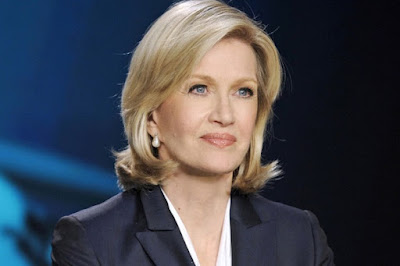Research on Influential Psychologists
Sigmund Freud
 Sigmund Freud, regarded as one of the greatest minds of the 20th century was born in Freiburg, Moravia, in 1856. Freud was educated in Vienna where he became a neurologist and founded psychoanalysis (BBC, n.d.).
Sigmund Freud, regarded as one of the greatest minds of the 20th century was born in Freiburg, Moravia, in 1856. Freud was educated in Vienna where he became a neurologist and founded psychoanalysis (BBC, n.d.).Freud studied medicine at the University of Vienna in 1873 and in 1886 he set up a private practice specializing in nervous disorders and brain disorders.
He development many theories throughout his life such as the theory of infantile sexuality, his psychoanalytic theory of personality (structure of the mind) and the theory of the unconscious.
In the theory of the unconscious, Freud believed that there are instincts that drive the unconscious. He divided them into 2 groups: Eros (the life instincts) and Thanatos (the death instincts). Eros consists of sexual instincts while Thanatos consists of aggressive and self-destruction impulses.
Thornton (n.d.) reports that the structure of the mind or personality illustrated by Freud show
3 structural elements: The Id, Ego and Superego.
- The id is described as the part of the mind that contains sexual drives
- The super-ego contains the conscience
- The ego is the conscious self that is created by the interactions of the id and super-ego and it makes peace between the conflicting demands and external reality.
In 1900, Sigmund Freud published his ideas and work analyzing dreams in a book called 'The Interpretation of Dreams'. He held the position of Professor of Neuropathology at the University of Vienna from 1902 to 1938 and died of cancer on 23 September 1939.
Freud has been criticized and many disagreed with his theories, but some followed his lead such as Carl Jung.
Carl Jung

Carl Gustav Jung was born in 1875 in Kesswill, Switzerland. Jung founded analytical psychology and collaborated with Freud for many years until their difference in ideas and opinions drove them apart (De Oliver Maraldi and De Fatima Fernandes, 2018).
Jung graduated in medicine in 1900 and started working at the University Hospital of Zurich.
He was a supporter of spirituality, religion and parapsychology. Jung and Freud has opposing ideas on the role of sexuality. Jung disagreed with Freud's theory that sexual desires were a dominant aspect of the mind. Jung believed that other psychological forces such as religion were important and should be given their own importance and not be undermined to transformations of sexual energy (De Oliver Maraldi and De Fatima Fernandes, 2018).
The two scientists also had contrasting ideas on parapsychological phenomena (psi). In simple words, Jung based many of his theories on psi- related experiences while Freud thought that the concept was non sense.
After the separation with Freud, Jung experienced a 'life-altering crisis' (Corbett, 2009).
He saw visions and heard voices as if he was trapped in his psyche, he called this 'confrontation with the unconscious'. Kushner (2016) notes that Jung worked on preventing the conscious mind to block what the unconscious mind was trying to tell him and tried to associate or translate the feelings into images. He purposely caused himself hallucinations and named this process 'active imagination'. His experiences were published in the book 'Memories, Dreams, Reflections' and his discoveries were part of 'The Red Book'.
In 1944 he was named chair of medical psychology at the University of Basel, unfortunately had to resign due to health problems. He eventually died 1961.
Sources:
BBC (n.d.) Sigmund Freud (1856-1939). BBC. [Online] (n.d.) Available from: http://www.bbc.co.uk/history/historic_figures/freud_sigmund.shtml [Accessed 18/04/20].
CORBETT, S (2009) The Holy Grail of the Unconscious. The New York Times. [Online] 16th Sept. Available from: https://www.nytimes.com/2009/09/20/magazine/20jung-t.html [Accessed 19/04/20].
DMITRI KESSEL/TIME LIFE PICTURES/GETTY IMAGES (n.d.) Carl Jung. [Online image] Available from: https://www.theguardian.com/commentisfree/belief/2011/may/30/carl-jung-ego-self [Accessed 18/05/20].
KUSHNER, M. D (2016) Understanding Your Dreams by Using Jung's "Active Imagination". Psychology Today. [Online] 23rd Oct. Available from: https://www.psychologytoday.com/us/blog/transcending-the-past/201610/understand-your-dreams-using-jungs-active-imagination [Accessed 19/04/20].
MARY EVANS/SIGMUND FREUD COPYRIGHTS (courtesy of W.E. Freud) (1921) Sigmund Freud, 1921. [Online image] Available from: https://www.britannica.com/biography/Sigmund-Freud/images-videos [Accessed 18/04/20].
THORNTON. P, S (n.d.) Sigmund Freud (1856—1939). In: FIESER, J and DOWDEN, B (eds.) The Internet Encyclopedia of Philosophy, ISSN 2161-0002.



It would be good here to discuss how this is related to your project. Why have you looked at these two psychologists? Will you discuss their theories in your video? You have included an excellent reference list. Well done. It would be best if in the blog post you include in-text citations that correspond with your reference list entries.
ReplyDelete